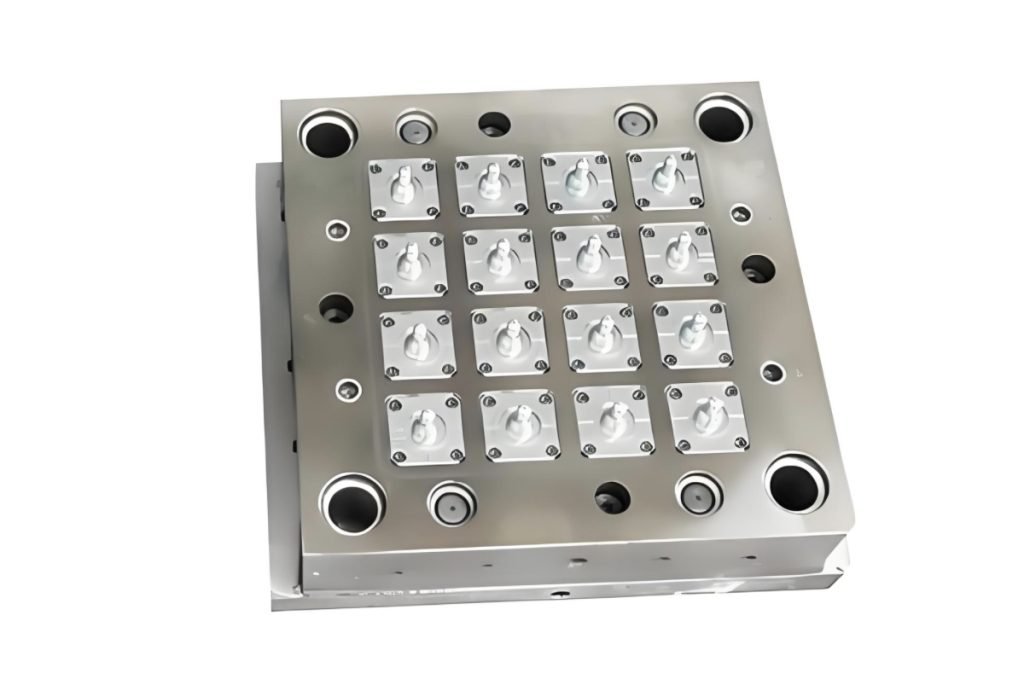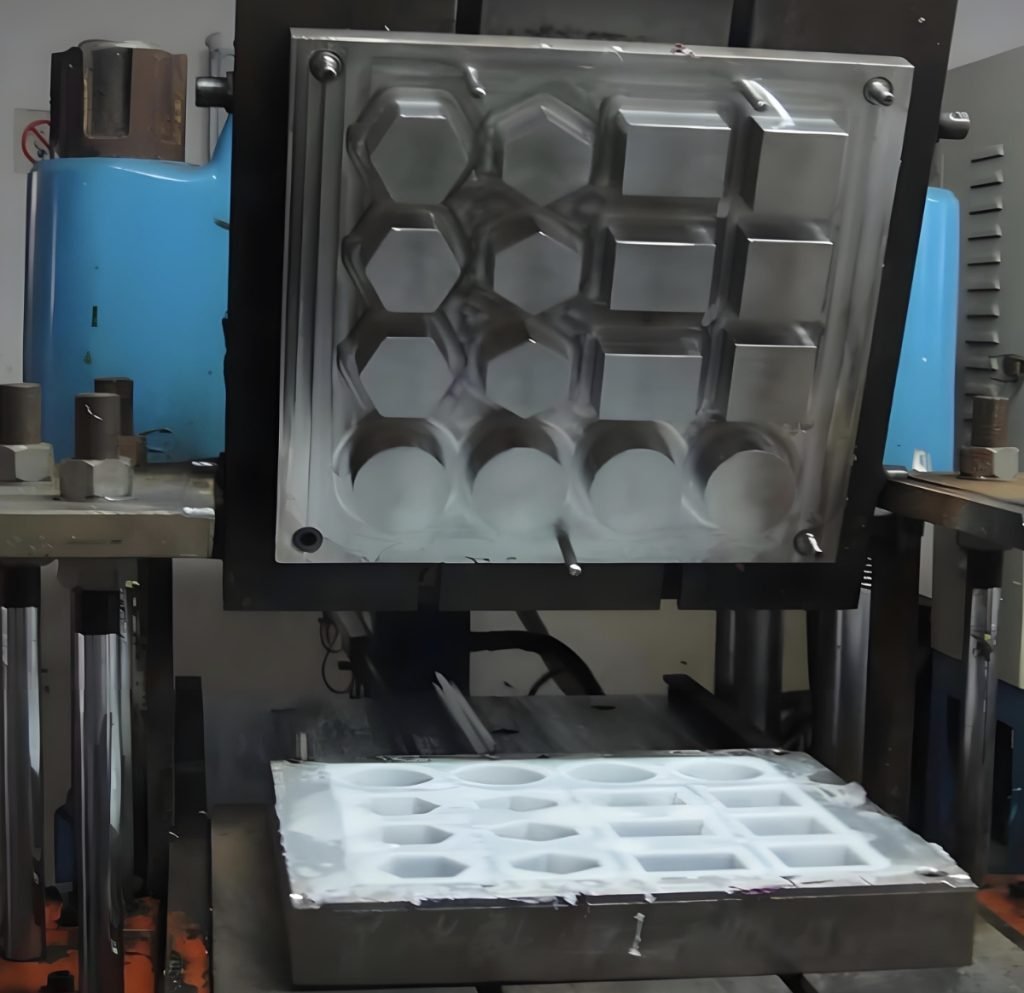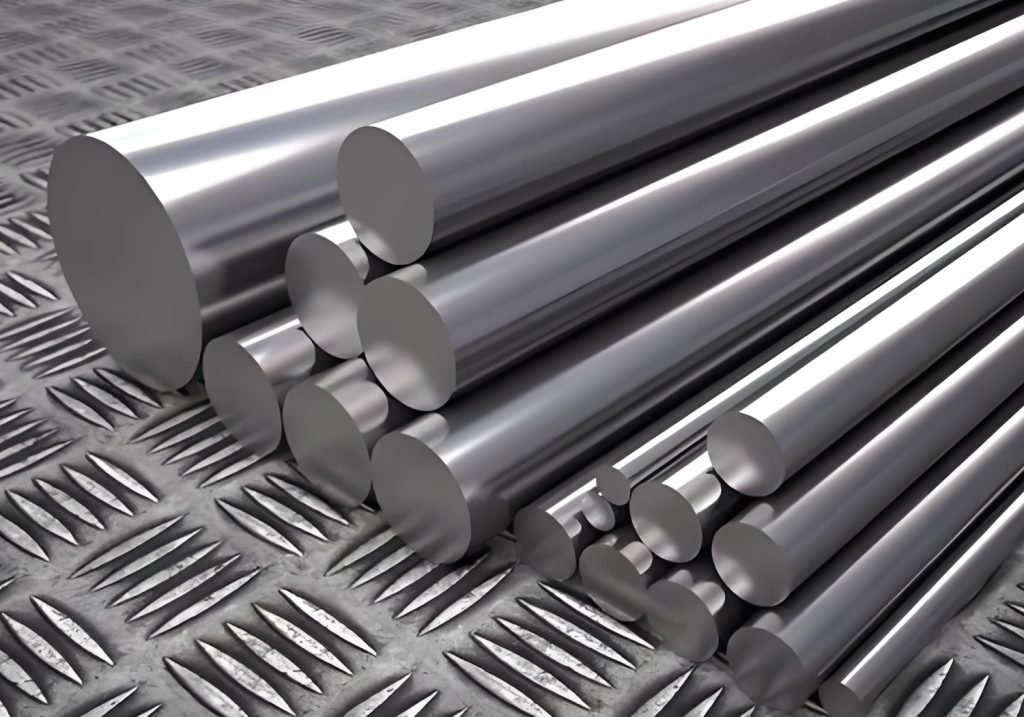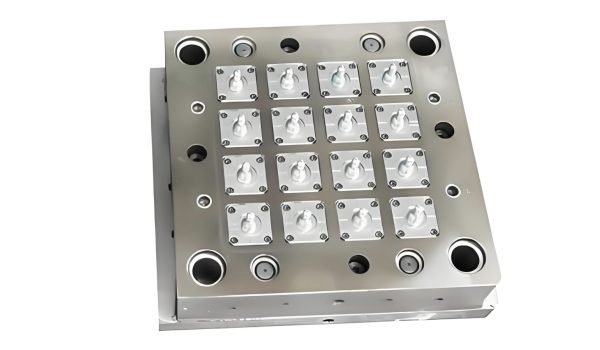LSR injection molds need to withstand temperatures from -60°C to 200°C and keep their dimensions stable. Manufacturers have a big decision to make when choosing the metal for their LSR injection molds.
LSR injection molding requires high tooling precision especially when you have complex geometries and thin walled parts to produce. High quality LSR molds cost a lot upfront but manufacturers find value in consistent quality and optimized production.
This article will cover the key factors to choose the best metal for LSR injection molds. Manufacturers can make smart decisions that balance performance needs with long term costs.

What is LSR Injection Mold and Its Role in the Molding Process
LSR injection molding is now the go to manufacturing method to produce precision parts in all industries. The key to better production is to know its components and processes.
What is LSR (Liquid Silicone Rubber)?
LSR is a 2 part platinum cured elastomer that produces durable flexible components when processed correctly. Its chemical structure has alternating silicon and oxygen atoms with methyl or vinyl side groups, classifying it as a thermoset elastomer.
The material works great in temperatures from -65°C to 150°C and can handle short bursts up to 260°C. LSR has a low compression set, stays translucent for easy coloring and stands up great against chemicals and UV exposure.
What is an LSR Injection Mold?
An LSR injection mold is a specialized tooling system that shapes and cures liquid silicone rubber into finished parts. These tools are different from standard injection molds because they have to handle LSR materials’ unique processing requirements. The molds need to be high temperature resistant and have accurately designed cavities.
LSR molds and conventional thermoplastic molds differ mainly in their fit specifications. LSR’s very low viscosity means molds need much tighter fits. Gaps larger than 5-7.5 μm can cause flash to form on the finished parts. These molds also need to handle the operating temperatures between 320°F to 420°F needed for proper curing.
Relationship Between LSR Injection Mold and the LSR Injection Molding Process
The LSR injection molding process combines 2 liquid components in a 1:1 ratio before injection into a heated mold. The mold is both a shaping tool and curing chamber. Precise temperatures in the mold activates the platinum catalyst that turns liquid silicone into a solid elastomer.
The mold’s design affects how well the LSR molding process works. Advanced venting systems must remove air from the cavity before injection to prevent defects in the final product. The molding process runs at lower pressures (1,000-5,000 PSI) than thermoplastic injection, so molds need appropriate pressure resistance.
Why Choosing the Right Mold Metal Matters
The right metal choice for an LSR injection mold affects production quality and creates economical solutions. The chosen metal should last through hundreds of thousands of molding cycles at high temperatures without changing shape or surface quality.
The metal must also withstand LSR material’s abrasive nature. While silicone flows easily, it contains abrasive components that wear down mold surfaces over time. The metal choice also affects heat distribution throughout the mold, which is crucial for even curing and consistent part quality.
The mold cavity’s inner surface quality determines the manufactured products’ finish. Polished steel delivers the needed surface quality for transparent silicone parts. The right metal choice balances the original tooling costs against the mold’s expected lifespan and maintenance needs.

Key Requirements for LSR Molds
LSR injection molds just need materials that meet strict specifications. LSR’s unique properties put more stress on tooling than conventional plastics do. This means we must think over material selection carefully.
1) High heat resistance
LSR molds must handle extreme heat through thousands of production cycles. LSR molds have to withstand extreme heat through thousands of production cycles. LSR cures at temperatures between 130°C to 200°C. This is constant heat exposure that will damage lower quality materials. Heat resistance is key since LSR can handle constant temperatures up to 316°C and short bursts up to 371°C.
The mold’s temperature control prevents quality issues and improves curing times for uniform cooling. Your mold material should stay dimensionally accurate despite these heat challenges.
2) Corrosion and wear resistance
Production exposes LSR molds to many chemical compounds. The mold material should resist both chemical attack and mechanical wear. LSR itself handles environmental factors well, including UV rays, high temperatures, and corrosive chemicals.
Some solvents such as mineral spirits or gasoline, can attack LSR. This puts extra stress on mold materials. Durability matters because high-quality molds must keep their precision parts intact during high-volume production runs.
3) Dimensional stability
LSR molds face unique challenges with dimensional stability. The material expands during initial molding and then shrinks 2.5-3% after demolding and cooling. Post-curing brings another 0.5-0.7% shrinkage.
Mold designs must account for tool temperature, demolding temperature, cavity pressure, injection point location, and part dimensions that affect shrinkage. Well-laid-out LSR molds can hit tolerances as precise as ±0.01mm for specific tight-tolerance applications.
4) Smooth cavity surface finish
Mold cavity’s internal surface quality directly shapes the final part’s look since LSR components mirror the cavity surface texture. Polished steel remains the best choice to produce transparent parts.
Professional-grade LSR injection molds usually maintain an average surface roughness of about 174 nm. PTFE/nickel surface treatments can help parts come out of the mold more easily, depending on specific requirements.
Common Metals Used in LSR Mold Manufacturing
Choosing the right metal for LSR injection mold manufacturing needs a careful balance of thermal properties, durability, and costs. Several metals have proven to work well, each bringing unique benefits to specific applications.

1) H13 Tool Steel
H13 tool steel stands out as a top choice for LSR injection molds because it resists abrasion and handles heat really well. This chromium molybdenum hot work steel stays dimensionally stable at high temperatures and withstands the long heat exposure needed for LSR curing. H13’s hardness levels are usually between 44-48 RC but can go up to 50-52 RC.
Manufacturers prefer H13 for its excellent thermal fatigue cracking resistance also known as heat checking. This is perfect for molds that go through repeated heating and cooling cycles. The steel’s high toughness helps molds last longer than those made from other materials.
2) Stainless Steel (420, 440C)
420 stainless steel strikes a great balance between hardness and corrosion resistance. This makes it ideal for LSR applications where cleanliness matters most. The martensitic steel contains 12-14% chromium that creates a protective oxide layer to keep molded parts clean.
Heat treating 420 stainless steel can increase its hardness to a range of 48 to 52 HRC. The steel’s surfaces polish easily, which improves finish quality and helps molds last longer.
3) Beryllium Copper
Beryllium copper alloys (like C17200) conduct heat by a lot better than steel while staying strong enough. These alloys can cut cooling times by 15-50% compared to regular mold materials.
The material stays hard and needs fewer repairs, which makes it great for complex LSR parts that need quick cycle times. About half of the U.S. plastic injection industry uses this material.
4) P20 Pre-Hardened Steel
P20 serves as a versatile, economical solution for LSR molds. It comes pre-hardened to around 300 HBW (30 RC), so you don’t need extra heat treatment. This chrome-moly tool steel combines good toughness with moderate strength levels.
P20 works great for simpler LSR applications. It machines well, polishes nicely, and handles temperature changes just fine. The pre-hardened state helps keep dimensions stable throughout the mold manufacturing process.
How to Choose the Best Metal for Your LSR Mold
Choosing the right metal for your LSR injection mold means balancing several practical factors. Your choice between H13, stainless steel, beryllium copper, or P20 steel will affect production efficiency, part quality, and overall costs throughout the mold’s operational life.
1) Production volume considerations
Production volume guides metal selection fundamentally. High-volume production runs that need extended mold life work best with hardened steel options like H13 due to their superior durability and wear resistance.
Aluminum or P20 pre-hardened steel makes more economical sense for prototype or low-volume production. Companies running continuous operations benefit from premium metals despite higher original costs, as the mold’s expected lifecycle affects this decision.
2) Part complexity and required tolerances
Part geometry complexity shapes metal selection for LSR molds. Complex designs with intricate features need precision-machined steel that stays dimensionally stable through repeated heating and cooling cycles.
LSR molds can achieve precision up to ±0.01mm in specific applications where parts need tight tolerances. Metals must withstand higher injection pressures without deformation, especially for thin-walled sections (down to 0.127mm).
3) Surface finish requirements
Metal selection depends heavily on surface quality requirements. Polished stainless steel works best for transparent or optically critical components, with typical surface roughness around 174 nm.
Medical-grade components need 420 stainless steel because of its exceptional surface finish capabilities and compatibility with cleanroom environments. Gate positioning needs careful thought since they leave visible marks on finished parts.
4) Maintenance and lifecycle cost
The total cost goes beyond your original tooling expenses. Hardened steels cost more upfront but you’ll spend less on maintenance. You’ll still need regular maintenance—cleaning, lubrication, and inspection—to prevent wear whatever metal you choose.
How often you maintain depends on your production volume, mold complexity, and material properties. This ranges from simple daily cleaning to complete quarterly inspections.
Summary Table: Metal Selection at a Glance
| Metal Type | Hardness Range | Heat Resistance | Corrosion Resistance | Surface Finish Quality | Production Volume Suitability | Relative Cost |
| H13 Tool Steel | 44-52 RC | Excellent | Good | Very Good | High volume | Medium-High |
| Stainless Steel (420, 440C) | 48-52 RC | Very Good | Excellent | Excellent | Medium-High volume | High |
| Beryllium Copper | 38-45 RC | Good | Very Good | Good | Medium volume | Very High |
| P20 Pre-Hardened Steel | ~30 RC | Good | Moderate | Good | Low-Medium volume | Low-Medium |
Conclusion: Optimize Your LSR Mold with the Right Material
Choosing the right metal is essential for successful LSR injection mold manufacturing. H13 tool steel is ideal for high-volume production, while stainless steel delivers excellent surface quality. Factors like production volume, part complexity, and surface finish should guide your decision. Though materials like beryllium copper cost more, they offer faster cycle times and improved efficiency.
For the best results, work with experts like Fecision, who can help you select the right material and optimize your mold design. The right metal choice ensures longer mold life, better part quality, and cost-effective production.




